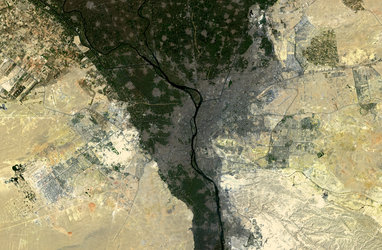Accept all cookies Accept only essential cookies See our Cookie Notice

About ESA
The European Space Agency (ESA) is Europe’s gateway to space. Its mission is to shape the development of Europe’s space capability and ensure that investment in space continues to deliver benefits to the citizens of Europe and the world.
Highlights
ESA - United space in Europe
This is ESA ESA facts Member States & Cooperating States Funding Director General Top management For Member State Delegations European vision European Space Policy ESA & EU Space Councils Responsibility & Sustainability Annual Report Calendar of meetings Corporate newsEstablishments & sites
ESA Headquarters ESA ESTEC ESA ESOC ESA ESRIN ESA EAC ESA ESAC Europe's Spaceport ESA ESEC ESA ECSAT Brussels Office Washington OfficeWorking with ESA
Business with ESA ESA Commercialisation Gateway Law at ESA Careers Cyber resilience at ESA IT at ESA Newsroom Partnerships Merchandising Licence Education Open Space Innovation Platform Integrity and Reporting Administrative Tribunal Health and SafetyMore about ESA
History ESA Historical Archives Exhibitions Publications Art & Culture ESA Merchandise Kids Diversity ESA Brand Centre ESA ChampionsLatest
Space in Member States
Find out more about space activities in our 23 Member States, and understand how ESA works together with their national agencies, institutions and organisations.
Science & Exploration
Exploring our Solar System and unlocking the secrets of the Universe
Go to topicAstronauts
Missions
Juice Euclid Webb Solar Orbiter BepiColombo Gaia ExoMars Cheops Exoplanet missions More missionsActivities
International Space Station Orion service module Gateway Concordia Caves & Pangaea BenefitsLatest
Space Safety
Protecting life and infrastructure on Earth and in orbit
Go to topicAsteroids
Asteroids and Planetary Defence Asteroid danger explained Flyeye telescope: asteroid detection Hera mission: asteroid deflection Near-Earth Object Coordination CentreSpace junk
About space debris Space debris by the numbers Space Environment Report In space refuelling, refurbishing and removingSafety from space
Clean Space ecodesign Zero Debris Technologies Space for Earth Supporting Sustainable DevelopmentApplications
Using space to benefit citizens and meet future challenges on Earth
Go to topicObserving the Earth
Observing the Earth Future EO Copernicus Meteorology Space for our climate Satellite missionsCommercialisation
ESA Commercialisation Gateway Open Space Innovation Platform Business Incubation ESA Space SolutionsLatest
Enabling & Support
Making space accessible and developing the technologies for the future
Go to topicBuilding missions
Space Engineering and Technology Test centre Laboratories Concurrent Design Facility Preparing for the future Shaping the Future Discovery and Preparation Advanced Concepts TeamSpace transportation
Space Transportation Ariane Vega Space Rider Future space transportation Boost! Europe's Spaceport Launches from Europe's Spaceport from 2012Latest
Earth from Space: Eastern Mediterranean
Thank you for liking
You have already liked this page, you can only like it once!
Copernicus Sentinel-3’s wide view captures the eastern edge of the Mediterranean and surrounding countries.
Zoom in to explore this image at its full resolution or click on the circles to learn more.
This wide view includes Egypt to the south, and Israel, Jordan, Lebanon and Syria to the east. Part of Saudi Arabia can be seen to the east of the Red Sea and Sudan to the west. To the north are the island of Cyprus and the south coast of Türkiye.
The greenish triangle of Egypt’s fertile Nile Delta contrasts with the surrounding bare desert. With less than 3% of Egypt's land suitable for agriculture, the delta is an important farming region. Cairo, Egypt’s capital, appears brown-grey at the bottom of the Delta.
The Nile River is clearly visible. Flowing some 6650 km, the Nile is the longest river in the world. This mighty river rises south of the equator and flows northwards through northeast Africa before draining into the Mediterranean Sea.
The Red Sea is prominent in the image. It is connected to the Mediterranean by the Suez Canal, one of the world’s most important waterways, providing a direct link between the Mediterranean Sea and the Indian Ocean.
The smaller body of water in the centre right of the image is the Dead Sea, the lowest point on the Earth's surface and ten times saltier than the open sea.
The light green area south of the Dead Sea is a large complex of evaporation ponds, which produce salt for the chemical industry and human consumption.
The Copernicus Sentinel-3 mission observes our home planet to understand large-scale environmental dynamics. Based on a constellation of two identical satellites, the mission carries a suite of instruments to measure our oceans, land, atmosphere and ice and provide critical information for a range of applications from marine observations to large-area vegetation monitoring.
-
CREDIT
contains modified Copernicus Sentinel data (2023), processed by ESA -
LICENCE
CC BY-SA 3.0 IGO or ESA Standard Licence
(content can be used under either licence)

Cairo, Egypt

Earth from Space: Sentinel-3: better than good

Eastern Desert

Earth from Space: Eastern Desert















 Germany
Germany
 Austria
Austria
 Belgium
Belgium
 Denmark
Denmark
 Spain
Spain
 Estonia
Estonia
 Finland
Finland
 France
France
 Greece
Greece
 Hungary
Hungary
 Ireland
Ireland
 Italy
Italy
 Luxembourg
Luxembourg
 Norway
Norway
 The Netherlands
The Netherlands
 Poland
Poland
 Portugal
Portugal
 Czechia
Czechia
 Romania
Romania
 United Kingdom
United Kingdom
 Slovenia
Slovenia
 Sweden
Sweden
 Switzerland
Switzerland

























